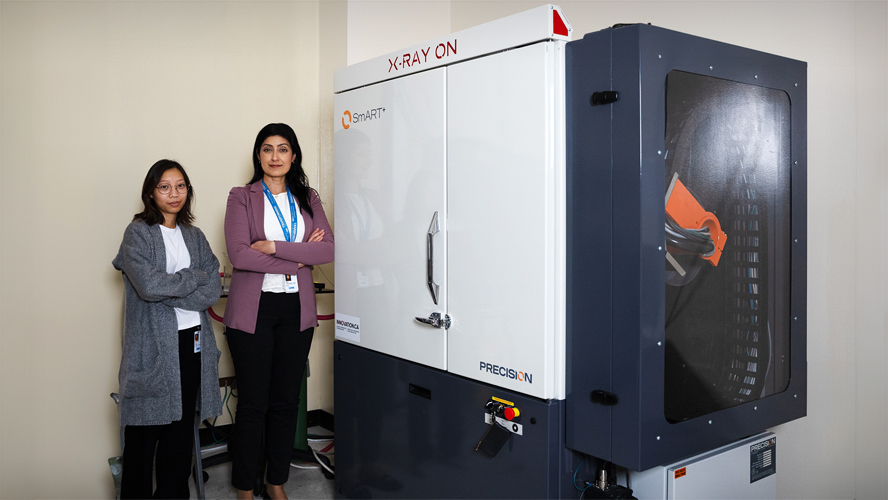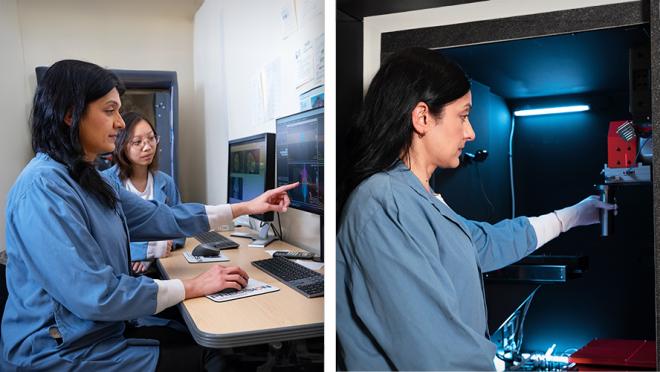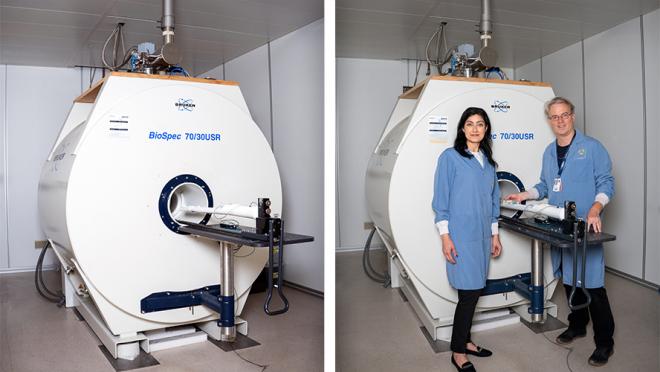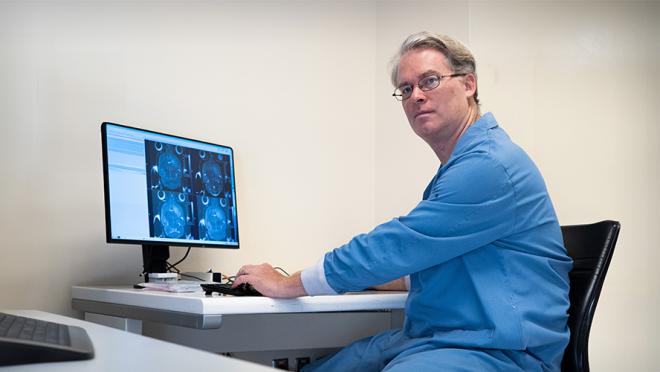
Funding received from the Canada Foundation for Innovation (CFI) enabled recent technology improvements at the Research Innovation Core Facility known as STTARR (Spatio-Temporal Targeting and Amplification of the Radiation Response). A cutting-edge SmART + preclinical irradiator system from Precision X-Ray was installed in November 2022, and the 7T small-bore MRI scanner was upgraded to Bruker’s state-of-the-art platform in May 2023. Both units are located on the 7th floor of the Princess Margaret Cancer Research Tower.
SmART + preclinical radiotherapy irradiator is now available at UHN’s STTARR Innovation Core facility.
The SmART + system replaces the X-RAD225 precursor which had been used as a preclinical irradiator at UHN for over a decade. The new system is based on the X-RAD225, which was co-developed at UHN by Dr. David Jaffray and the late Dr. Richard Hill in collaboration with Precision X-Ray.
The new radiotherapy system will continue to enable researchers to precisely irradiate tissues and cells in pre-clinical models. The SmART + system provides a fully integrated animal treatment planning (ATP) and delivery software. The multi-modality image guidance of cone-beam computed tomography (CT) feature enables researchers to accurately target the anatomy or tumor of interest and the Bioluminescent Imaging (BLI) feature can precisely deliver the irradiation to specific cells, tissues or tumour of interest with minimal exposure to surrounding tissues.

An inside view of the SmART+ irradiator located in the STTARR facility.
The lead researchers on the CFI John R. Evans Leaders Fund were Drs. Marianne Koritzinsky and Michael Milosevic. Support for the CFI application was provided by the Strategic Research Initiatives Development (StRIDe) team. Digital support for the SmART + ATP software is provided by the UHN Digital computational consultant and technical specialist Steve Ansell. Support for the operation of the equipment is provided by the STTARR radiation physics team: Drs. Patricia Lindsay, Edward Taylor, Jan Seuntjens, and Daniel Letourneau. Dr. Naz Chaudary, the STTARR facility manager and research scientist, oversees the operation of the equipment. The purchasing process was supported by Piryanka Sasidharan, a junior project manager from Research Facilities Planning and Implementation, who worked in collaboration with Research Laboratory Services and UHN Safety Services.
The upgraded Bruker BioSpec 7T MRI system is now available at UHN’s STTARR facility.

(L) BioSpec 7T MRI system; (R) Naz Chaudary, Ph.D. STTARR Manager; Warren Folz, Ph.D. MRI lead.
The STTARR 7T small-bore MRI has been a work-horse platform for preclinical imaging research since its installation in 2007, supporting high-resolution imaging and advanced applications for around 25 research groups annually. The system also contributes to preclinical radiotherapy guidance, MR-guided focused ultrasound experimentation, novel contrast agent and theranostic agent development, and multi-modal imaging.
The original system components were transitioned to a retired lifecycle phase by Bruker in 2019. This CFI-funded upgrade is a comprehensive step forward from Bruker’s AVANCE II standard to its state-of-the-art NEO architecture, including the replacement of all system hardware and accessories except for the magnet itself. The NEO platform, running Paravision 360 software, provides a dramatic improvement over its predecessor, enabling higher performance in general, but also best-in-class fast imaging, safer operation, and longer hardware lifetimes. The upgrade also accounts for the essential biannual service of the system’s cold-head and refrigeration system through to the next decade, which has been the primary facility expense. A 15-year life cycle for the NEO architecture is anticipated.
The lead researchers on the CFI John R. Evans Leaders Fund were Drs. Lothar Lilge and Gelareh Zadeh. Support for the CFI application was provided by the Strategic Research Initiatives Development (StRIDe) team. Operation and management of the 7T are provided by Dr. Warren Foltz, STTARR MRI physicist, and Dr. Naz Chaudary, STTARR Innovation core manager and research scientist, who provides oversight. The purchasing process was supported by Peter Ashton and Piryanka Sasidharan from Research Facilities Planning and Implementation, who worked in collaboration with Research Laboratory Services and UHN Safety Services.

Since 2007, the STTARR facility has supported more than 900 independent projects, involving up to 1500 researchers, led by close to 400 principal investigators. The original 7T itself supported the production of more than 85 peer-reviewed papers, with many in high-impact factor journals. By renewing these systems, the STTARR facility is positioned to continue its service to UHN and its external academic and industrial clientele, and the successful PIs have secured their leading-edge investigations into novel strategies for cancer therapy. Furthermore, these improved technologies provide a stronger foundation for building novel drug treatments and aid in the advancement and translation of preclinical imaging into better clinical care.
A big thank you to everyone involved in making these new resources available to UHN researchers. For more information, please visit the STTARR Facility website: www.sttarr.com or email sttarr.general@uhn.ca.




